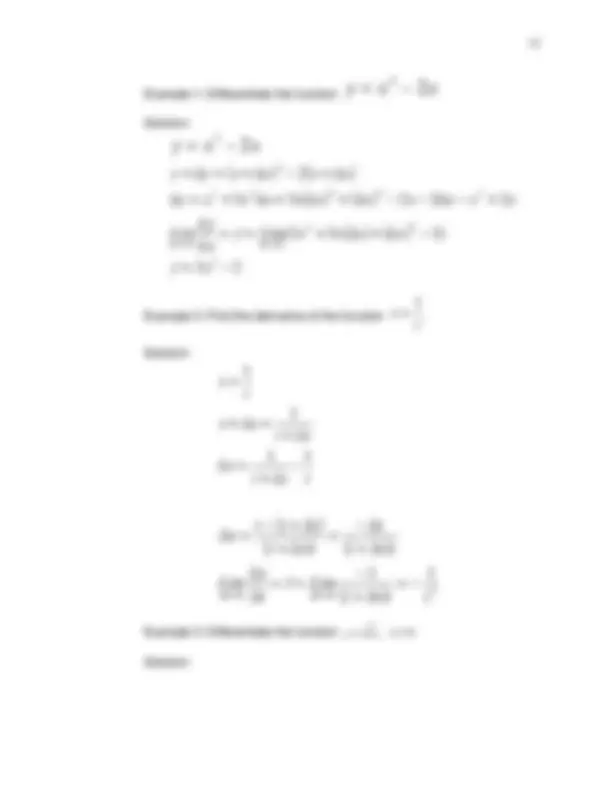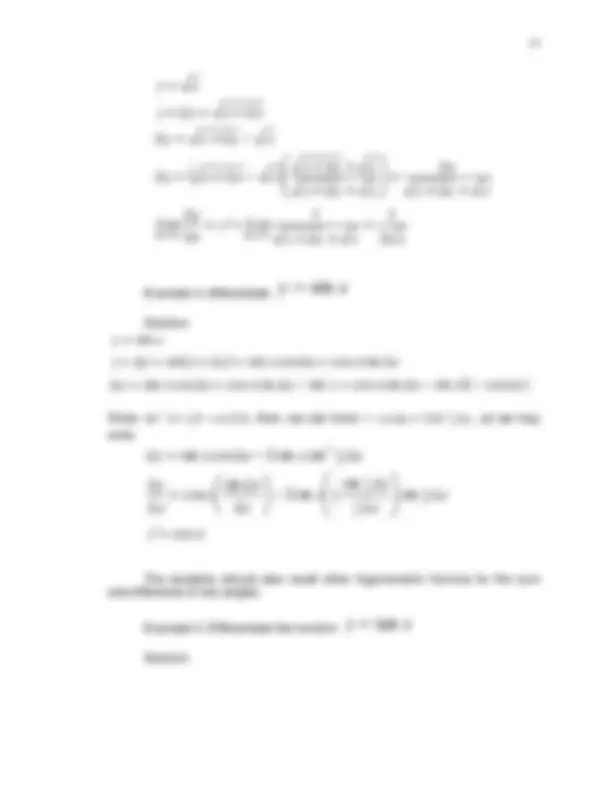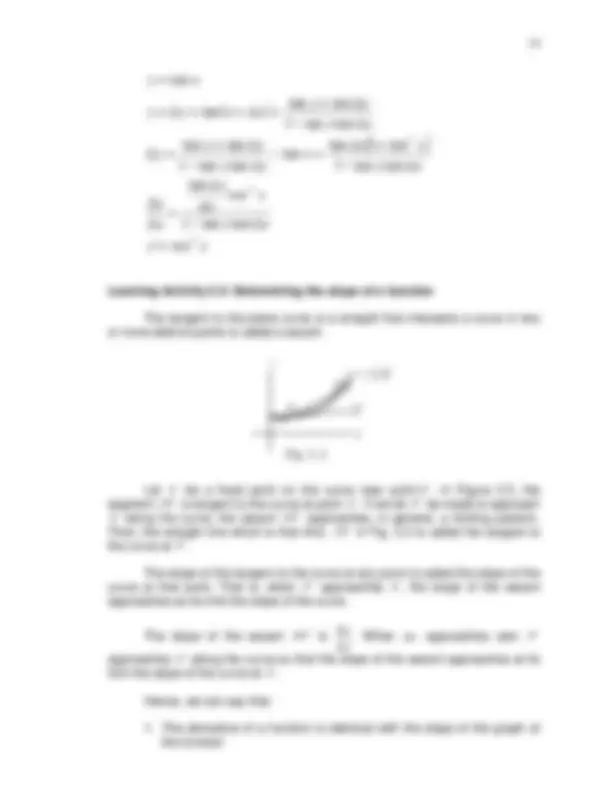





Study with the several resources on Docsity

Earn points by helping other students or get them with a premium plan


Prepare for your exams
Study with the several resources on Docsity

Earn points to download
Earn points by helping other students or get them with a premium plan
Community
Ask the community for help and clear up your study doubts
Discover the best universities in your country according to Docsity users
Free resources
Download our free guides on studying techniques, anxiety management strategies, and thesis advice from Docsity tutors
something that is obtained from, grows out of, or results from an earlier or more fundamental state or condition. 2a : a chemical substance related structurally to another substance and theoretically derivable from it. b : a substance that can be made from another substance. derivative. noun
Typology: Exercises
1 / 7

This page cannot be seen from the preview
Don't miss anything!




Unit 2 – THE DERIVATIVE, SLOPE AND RATE OF CHANGE
General Objective of the Unit:
At the end of the unit the student should be able to comprehend with the derivative, slope and rate of change.
Specific Objectives:
At the end of the unit, the student is expected to:
Content:
Learning Activity 2.1: Familiarization of the derivative
a corresponding change in y to the value y y. We call x an increment of x
and y an increment in y.
Hence, we can write
y f x x f x
In Figure 2.1, the ratio x
y
is the slope of the line that joint the points
P along the curve and in ordinary cases the line PP ' approaches a certain straight line ( PT in the figure) as a limiting position.
Therefore, the ratio x
y
approaches a limit = the slope of the line PT.
This limit is called the derivative of y with respect to x.
Fundamental Definition: The derivative of y with respect to x is the limit
of the ratio x
y
when x approaches zero.
The derivative is designed by the symbol dx
dy
. Thus, we have
0 0
Other symbols for the derivatives are:
dx
d
Learning Activity 2.2: Determining the derivative
From the function,
By subtraction, we get
Dividing through by x , we obtained
Determine the limit of x
y
as x approaches zero.
x
Fig. 2..
y
y
x
0 0
Example 4: differentiate y^ sin x
Solution:
y x x x x x x x x x
write
2
1
2
1
2
1
2
1
2
(^21)
The students should also recall other trigonometric formula for the sum and difference of two angles.
Example 5: Differentiate the function y^ tan x
Solution:
2
2
2
Learning Activity 2.3: Determining the slope of a function
The tangent to the plane curve is a straight that intersects a curve in two or more distinct points is called a secant.
Let P be a fixed point on the curve near point P '. In Figure 2.2, the segment PT is tangent to the curve at point P. If we let P ' be made to approach P along the curve, the secant PP ' approaches, in general, a limiting position. Then, the straight line which is that limit, PT in Fig. 2.2 is called the tangent to the curve at P.
The slope of the tangent to the curve at any point is called the slope of the curve at that point. That is, when P ' approaches P , the slope of the secant approaches as its limit the slope of the curve.
The slope of the secant PP ' is x
y
. When x approaches zero P '
approaches P along the curve so that the slope of the secant approaches at its limit the slope of the curve at P.
Hence, we can say that:
Fig. 2..
2
2
When t ^2 ,
1 dt
dr in /sec
Example 2: The radius of a sphere, initially zero increase at the rate of 6 ft/sec. Find how fast the volume is increasing after 14 second.
Solution: Let V the volume of the sphere ft^3 /sec; (^) r the radius of the
54 /sec
3
4 2
2
3 3
(^34) 3
(^34) 3
4
References: